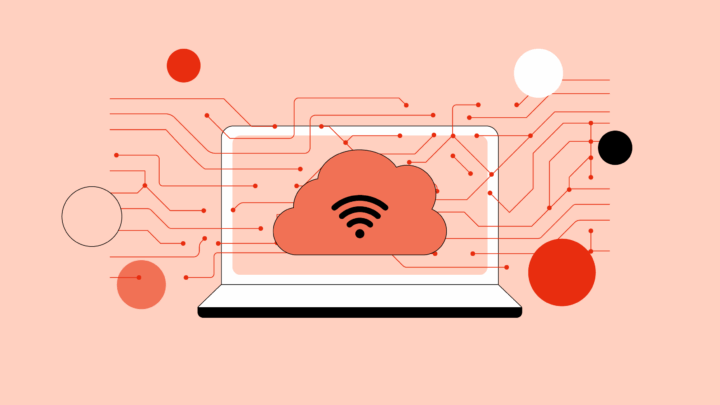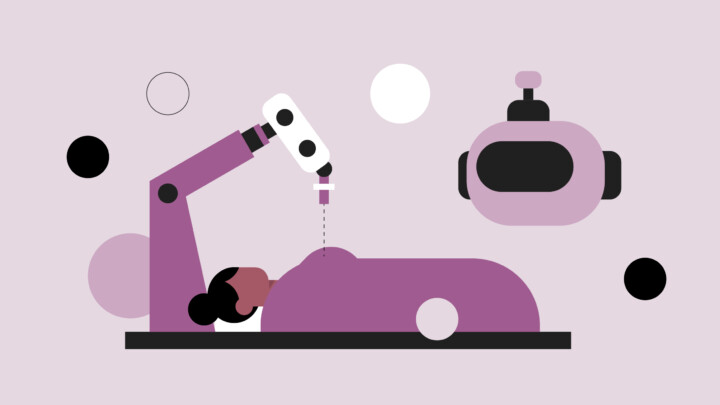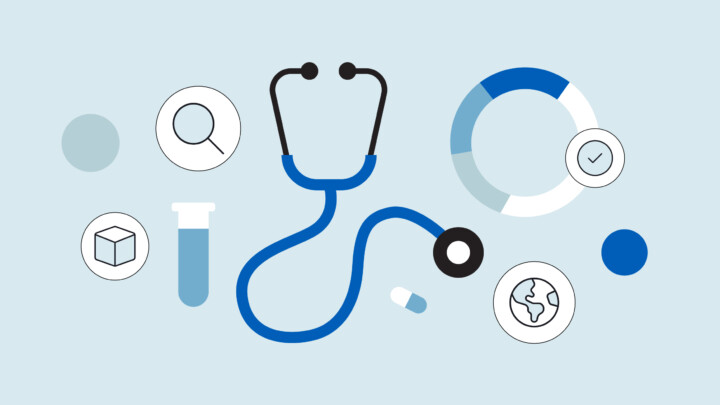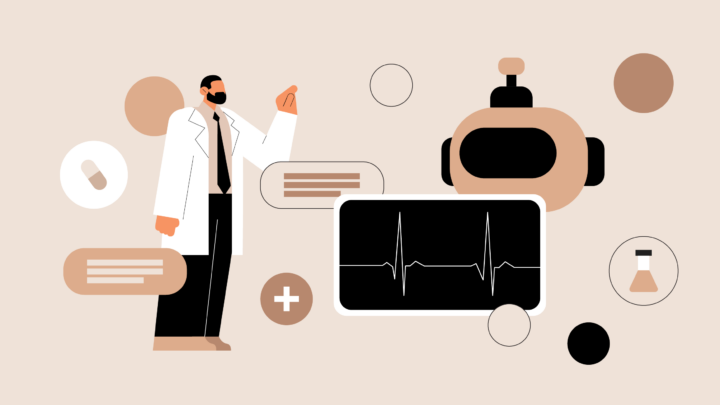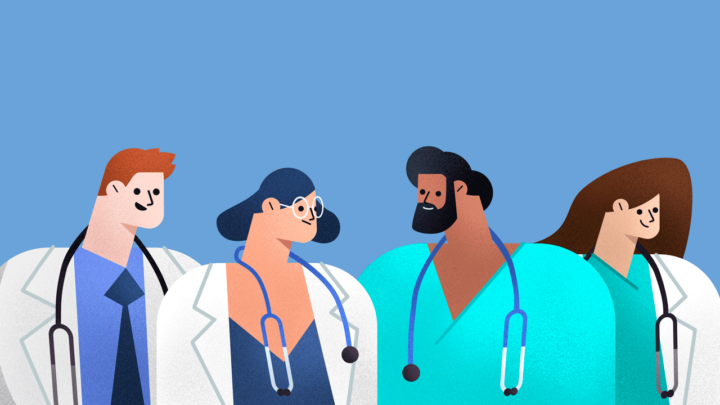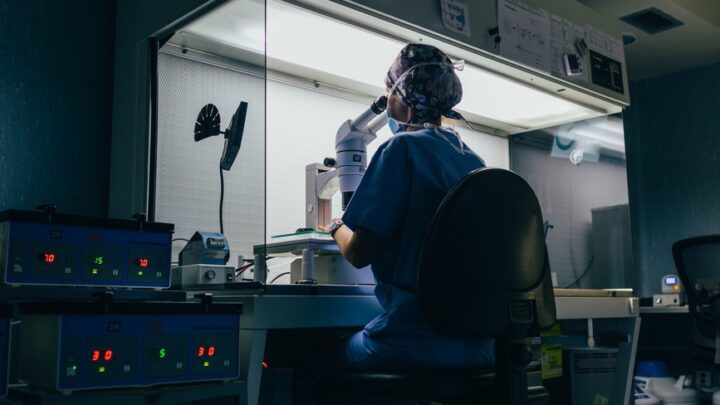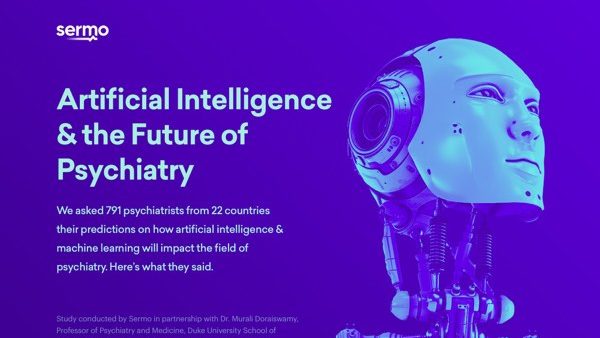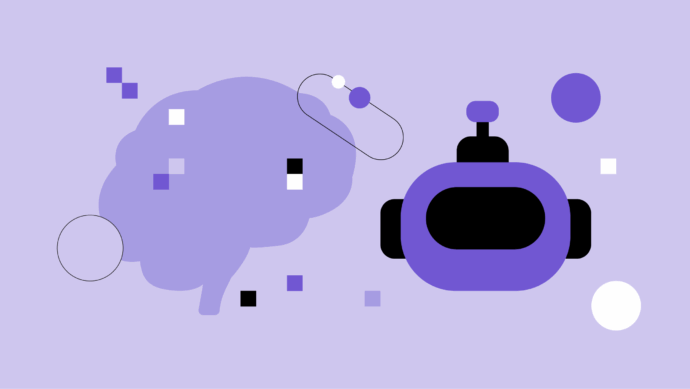
Machine learning and artificial intelligence play increasingly important roles in healthcare. One physician posted on Sermo that these technologies have “great potential but [are] a little scary.”
Many physicians agree with this sentiment. While machine learning has facilitated notable clinical and institutional advancements, how it will continue to change medicine is largely uncertain.
However, when Sermo asked physicians in the U.S. what the role of AI and machine learning in diagnostics would be in the next five years, the majority (57%) said it would become a routine part across many specialties.
Let’s consider the current landscape of machine learning in healthcare, including what machine learning really is and how healthcare leaders are responding to it.
What is machine learning in healthcare?
The objective of machine learning systems is to learn from data and make accurate predictions—without explicit programming. Machine learning models fall into four broad categories: Supervised, unsupervised, reinforcement and semi-supervised learning.
Here’s how each model applies to medicine:
Supervised machine learning
Supervised models train on labeled data, where each input has a corresponding known output. During training, these systems automatically adjust internal parameters to minimize discrepancies between predicted and actual outputs. This creates a function that reliably maps new inputs to accurate predictions based on learned relationships.
For instance, clinicians can train a supervised machine learning model on thousands of labeled mammogram images to detect breast cancer. The model then learns to recognize subtle patterns associated with malignancy by comparing its predictions with radiologists’ confirmed diagnoses.
Building a supervised model involves the following steps, which broadly align with those of other model categories:
- Define the research question.
- Collect relevant data.
- Preprocess and split the data into training and test datasets.
- Train the model using the algorithm on the training data.
- Evaluate the model’s performance using the test data.
Unsupervised machine learning
Unsupervised systems process unlabeled data to identify natural patterns or groupings. They examine the data’s structure to detect similarities, differences, or relationships—organizing information without predefined labels. For instance, an unsupervised model could cluster anonymized patient health records to reveal hidden subgroups with shared symptom patterns.
Reinforcement learning
Reinforcement learning (RL) trains a system (agent) to make decisions through environmental interaction. The agent takes actions to achieve goals, receiving rewards or penalties based on predefined metrics. Through trial, error and feedback, it iteratively refines its strategies to maximize cumulative rewards, discarding ineffective behaviors and reinforcing optimal ones.
Semi-supervised learning
Supervised, unsupervised and reinforcement learning are the three primary machine learning models. Semi-supervised learning models are a less common, specialized form.
Semi-supervised learning models contain components of supervised and unsupervised learning. Data scientists train these models on a smaller labeled dataset (supervised learning) relative to a larger unlabeled dataset (unsupervised learning)—the labeled data guides the model’s learning. It’s particularly beneficial in situations where labeled data is limited and unlabeled data is readily available.
Machine learning, artificial intelligence and deep learning
People often use artificial intelligence (AI) and machine learning (ML) in healthcare interchangeably. Some also refer to AI and ML as deep learning. However, deep learning is a subset of machine learning, while machine learning is a subset of artificial intelligence.
Artificial intelligence refers to the broader domain of systems that approximate human intelligence, whether through pre-programmed rules or adaptive learning techniques. Machine learning relies exclusively on data-driven algorithms without explicit programming.
Deep learning models use artificial neural networks with multiple (deep) layers to automatically extract hierarchical representations from data. This allows the models to process unstructured data quickly and accurately.
All machine learning contributes to artificial intelligence, yet not all artificial intelligence systems use machine learning—some use rule-based or symbolic reasoning. Similar is true for the relationship between machine learning and deep learning. All deep learning systems contribute to machine learning models, but not vice versa.

Do industry leaders recognize the benefits of machine learning in healthcare?
Sermo surveyed over 100 U.S. healthcare decision-makers. Most recognize machine learning’s medium- to long-term advantages. While 91% agree machine learning will be foundational within five years, just 33% anticipate shorter-term advantages.
On broader current adoption trends, 45% of executives actively follow ML industry trends while only 25% have adopted these systems. Much of the same group of nonadopters (21%) acknowledge missed advancement opportunities for their institution.
3 key applications of machine learning in healthcare
Medical image diagnosis, personalized medicine and administrative automation are three applications to note. Here’s how they work, plus examples of machine learning in healthcare and how they’re used.
1. Medical imaging diagnosis
Deep learning models in healthcare analyze images to detect pathologies. In particular, these models have viable dermatological, neurological and oncological use cases, among other specialities. Machine learning models might even match the diagnostic performance of specialists.
Building on this idea, a Sermo member noted, “Artificial intelligence (AI) and machine learning enables digital twins to learn from large datasets, refine predictions and provide recommendations. For example, machine learning algorithms can analyze tumor heterogeneity and predict therapy resistance… As technology advances and barriers are addressed, digital twins will likely become integral to modern oncology practice.”
However, some physicians are skeptical. According to a Sermo member survey sent to physicians in the U.S., 71% of physicians say the risk of misdiagnosis due to over-reliance on AI is the biggest limitation of these technologies.
2. Personalized medicine
Machine learning is central to personalized medicine’s advancement. The expansion of precision medicine has paralleled the growing sophistication of machine learning models.
A Sermo member and Stomatologist spoke to an aspect of machine learning’s role in personalized medicine, saying, “This trend that started years ago has been increased by the fact that by 2025, AI systems are expected to be able to respond independently to specific questions from patients, especially after the health crisis. In this way, health can evolve into a completely personalized management.”
3. Administrative workflow automation
Like in other umbrella categories, machine learning offers various use cases in clinical administration: billing automation, claims processing, appointment scheduling and record management, just to name a few. These use cases drive cost savings, reduce human error, minimize manual intensiveness and streamline operations.
A physician posted on Sermo, explaining, “[Machine learning] certainly is gaining momentum in healthcare where it is being used for research not only to make discoveries but also to help recruit and enroll clinical trial participants; for practices to automate administrative and operational tasks, to make predictions, to support patient care and diagnoses, to provide personalized treatment; and more.”

Challenges of machine learning in healthcare
Data heterogeneity and clinical adoption are two primary challenges that the healthcare sector faces. Both contribute to delayed adoption among institutions.
Data heterogeneity, quantity and quality
Machine learning algorithms rely on large, high-quality, standardized datasets. Heterogeneous, biased or incomplete data corrupts machine learning predictions. The causes of this issue include:
- Variations in EHR (Electronic Health Record) systems and documentation standards
- Missing data mechanisms
- Healthcare providers’ prioritization of care delivery over data standardization
- Poorly labeled or misclassified diseases, conditions encompassing multiple underlying endotypes
Reflecting this, a physician posted on Sermo, saying: “Machine learning could help identify people at risk of adverse outcomes from being prescribed opioids, new research suggests Researchers at Canada’s University of Alberta have begun using a form of artificial intelligence to help estimate a patient’s risk of an emergency department visit, hospitalization or death within 30 days of filling an opioid prescription… Like all AI, the more data inputted representing specific populations and regular retraining improves prediction performance over time, leading to more effective opioid stewardship.”
Clinical adoption
Medical institutions cite the risk of predictive errors, privacy, security, non-interpretability and complexity as primary adoption concerns. Some physicians share similar sentiments. According to a Sermo member survey sent to physicians in the U.S., about 40% of respondents said that inadequate integration was a risk factor when using AI in diagnostic medicine.
One U.S. neurologist noted, “Many people who have been experimenting with ChatGPT, for example, have found it has a tendency to ‘hallucinate’ or just flat make up answers when it is uncertain… I don’t think it will be useful to have AI ‘hallucinate’ answers when uncertain in medical applications. Also—who is liable when AI gets something wrong?”
Another Sermo member, a Geriatrician, contributed, “… it is important to ensure that it is used ethically and responsibly, and that the privacy and security of patient data is taken into account.”
Learn how other physicians use machine learning
A Sermo survey of over 100 physicians indicated that 60% rely on large language models (LLMs)—a subset of deep learning—to check drug interactions. Over half use these tools for diagnosis support, and nearly half employ them for drafting clinical documentation or treatment plans. In fact, 70% leverage LLMs for patient education and literature searches.
Dr. Sara Farag, a gynecologic surgeon and Sermo medical advisory board member, noted: “These findings are unsurprising. As workloads grow and information volumes expand, LLMs prove increasingly valuable for physicians.”
On Sermo, physicians discuss their thoughts on artificial intelligence, machine learning and other consequential technologies. Join the conversation. Become a Sermo member today.
